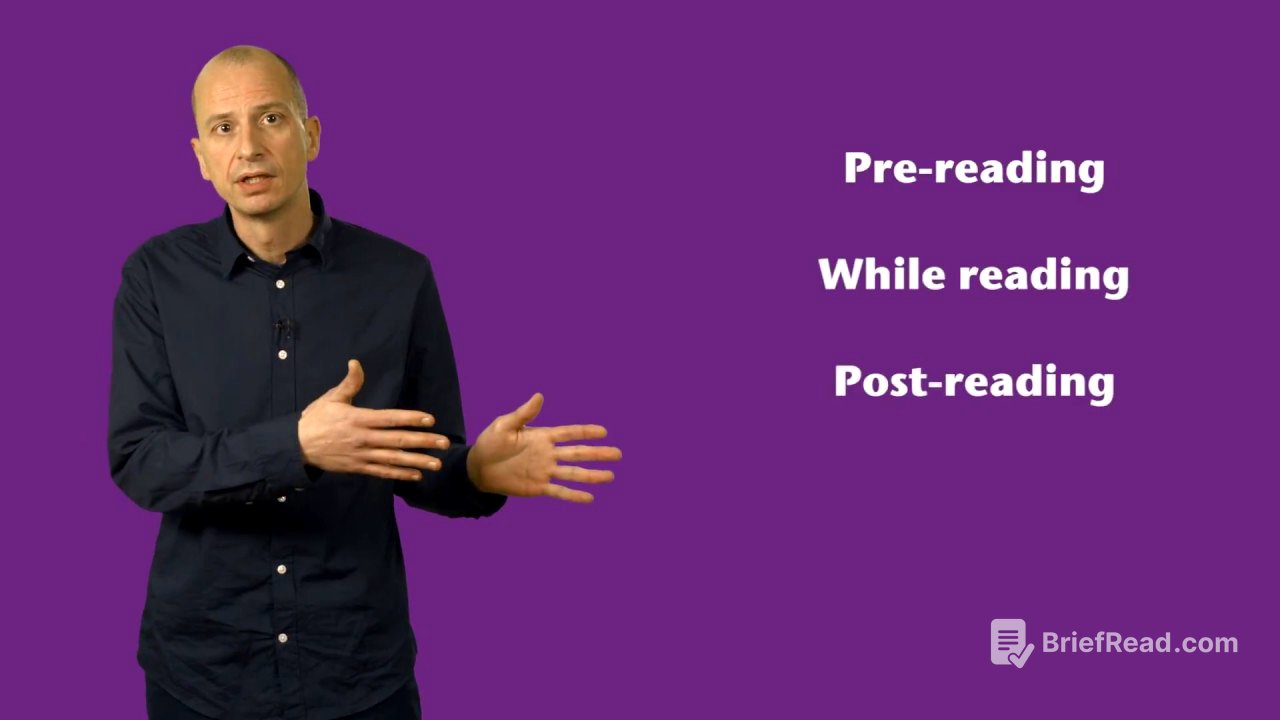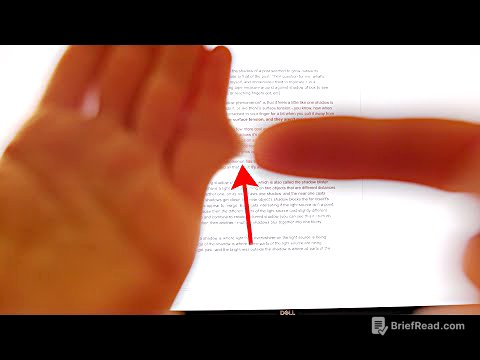TLDR;
This video provides a guide to enhancing reading comprehension through a three-stage approach: pre-reading, while-reading, and post-reading. It emphasizes activating background knowledge, setting clear reading purposes, utilizing audio to improve pronunciation and fluency, encouraging recall and explanation, and fostering further exploration of interesting topics.
- Activating background knowledge before reading helps students connect with the text.
- Setting a clear purpose for reading guides students' focus and reading strategies.
- Integrating audio while reading improves pronunciation and fluency.
- Encouraging students to recall and explain sections of the text enhances comprehension.
- Post-reading activities that encourage further exploration can deepen engagement and learning.
Introduction [0:04]
The video introduces a structured approach to reading comprehension, dividing the process into three key stages: pre-reading, while-reading, and post-reading. It promises to provide tips and strategies for each stage, demonstrating how they can be applied in a typical reading lesson to improve students' understanding and engagement with the text.
Pre-Reading Stage [0:25]
The pre-reading stage focuses on activating students' existing knowledge and experience related to the text's subject. Using the example of a text about collections, the instructor suggests using pictures and simple questions to tap into students' awareness of the hobby. Questions like "What objects can you see in the pictures?" and "Do you or does anyone you know collect anything?" can stimulate discussion and make connections to the topic. Key vocabulary that arises during this discussion should be written on the board to prepare students for the reading.
While-Reading Stage: Purpose and Techniques [1:27]
This section emphasizes the importance of establishing a clear purpose for reading, similar to how we read in our first language. The purpose dictates the reading strategy; for example, reading to identify the type of text requires a different approach than reading to find detailed information. The video also suggests reading while listening to an audio version of the text to improve pronunciation and fluency. This method helps students hear naturally connected speech and encourages them to read without getting bogged down by individual words they don't understand.
Enhancing Comprehension During Reading [2:55]
To enhance comprehension during the reading process, the video suggests breaking the text into smaller sections and having students recall and explain what they've read in pairs or small groups. Allowing students to use their first language at lower levels can facilitate this process. Explaining the text aloud encourages deeper understanding, and students often reread sections to justify their explanations to each other.
Post-Reading Stage: Reflection and Exploration [3:39]
The post-reading stage involves reflection and further exploration of the text. Students are asked to share one thing they found interesting in the text, with the instructor modeling this by sharing their own interesting find. For homework, students are encouraged to research something they found interesting online. In the following lesson, students can briefly share what they learned, fostering a culture of curiosity and continued learning. The instructor notes that it may take time for students to actively participate in this activity.









